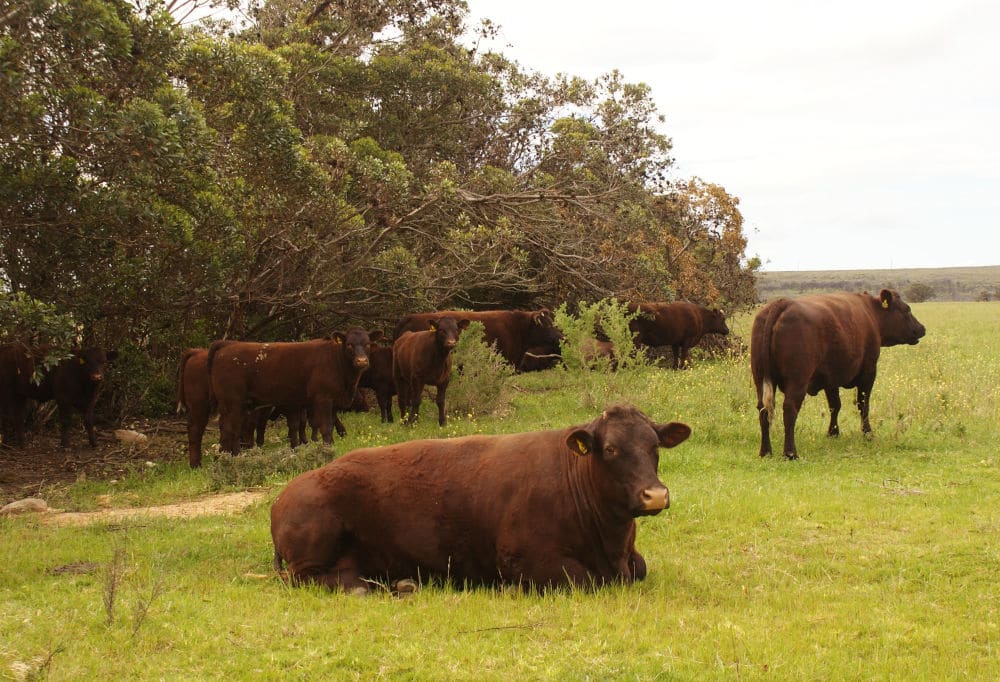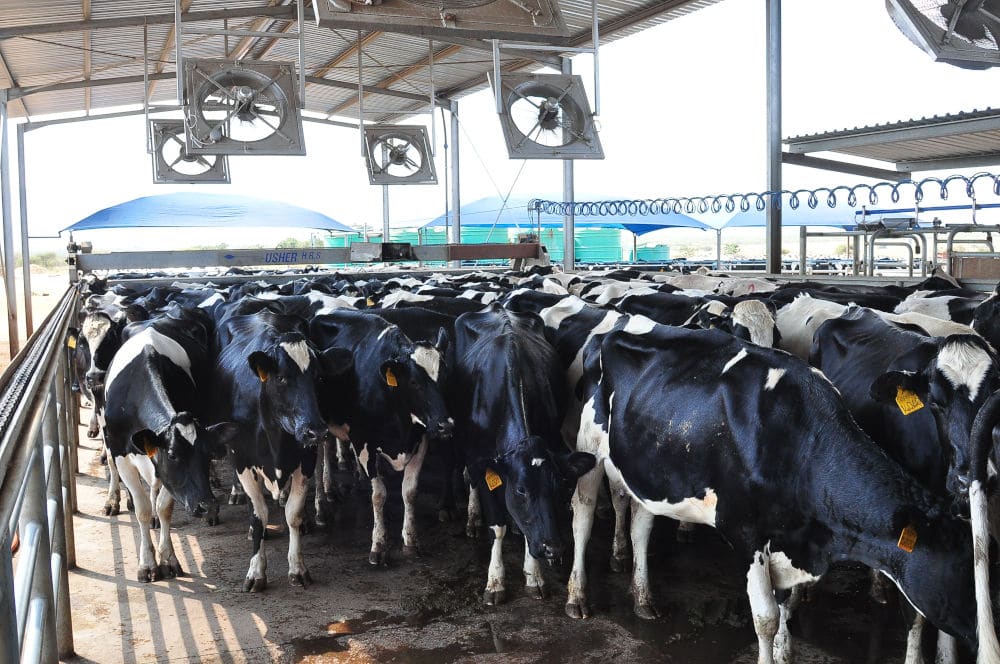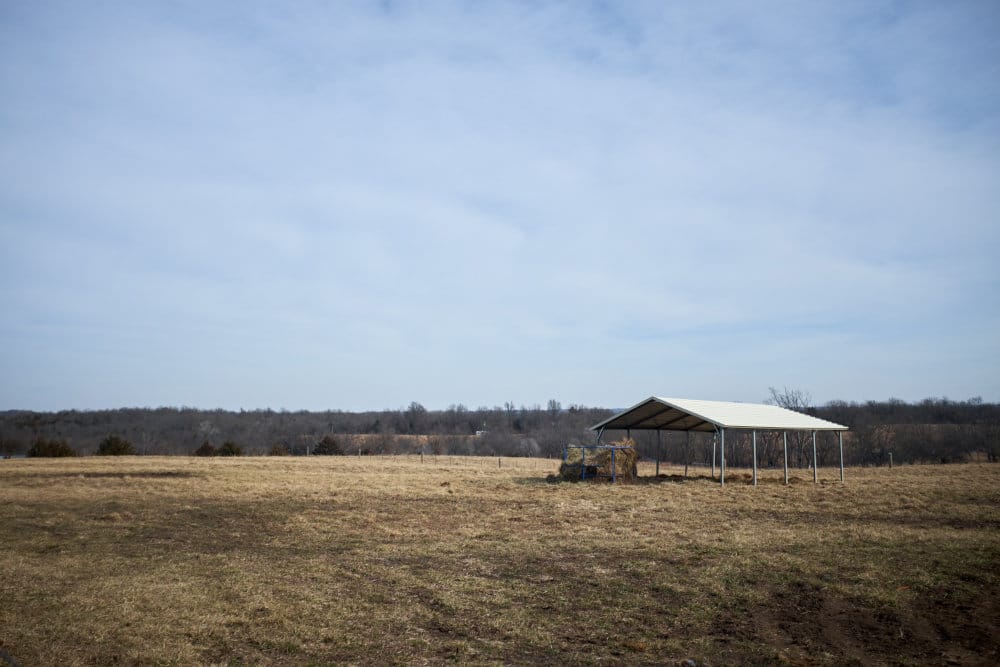Estimated reading time: 6 minutes
Heat stress not only undermines livestock productivity – it can also lead to sunstroke, which can result in mortalities during heatwaves. Structures that provide coolness, not just shade, is the answer to this problem. Meticulously planned structures also offer additional advantages than just a cooling effect against the sun.
The natural solution
Trees are probably the cheapest solution, and they have good air circulation in the shade. Livestock, interestingly, also seem to prefer the shade of trees to that of man-made structures. Trees block the sun’s rays while the transpiration in the leaves makes the shade even cooler. Where I come from people believed the shade of a pear, willow and indigenous shepherd’s tree (witgat) to be the coolest.
Read more about the basics of an on-farm feedlot.
It normally takes years for the trees a producer plants to yield enough of a cooling effect, but since livestock farming is a long-term business, it is worth considering. However, establishing and nurturing trees until they reach maturity are not without its challenges, especially in certain parts of the country. Trees also tend to die prematurely due to the concentration of manure and urine in their root zones.

Steel structures for shelter
Steel structures, on the other hand, can be erected without much effort, and can be planned and built in a way that promotes multi-purpose use and simplifies livestock farming. It is easy and quick to set up and the design can be customised to satisfy every requirement.
Steve Maycock of SM Structures, which specialises in erecting structures (from churches and aircraft hangars to structures for livestock), says using steel structures on the farm requires close co-operation between the producer who has a thorough understanding of his environment and requirements, and an expert who is well versed in the different ways steel structures can be utilised.
He says they use only the best locally produced steel in the structures they build. The units are strong enough to withstand serious earthquakes while sustaining little damage. The advantage of steel structures is that they can be permanent or movable units. Steel is extremely durable and strong and will keep maintenance and repairs to a minimum. In addition, it remains sturdy even after many years of use.
Steel is relatively light, making it very cost-effective to transport, and it is quick and easy to erect the structure. It requires less maintenance due to the steel’s ability to withstand stress, there are rarely weak spots in the structure, and it does not crack, bend or break. These are all factors that make steel an effective and affordable building material.
Steel offers relatively good resistance to the elements, with little rust and weathering. This contributes to the structure’s sturdiness and safety over time.
Most South African livestock breeds are heat tolerant and livestock producers have strictly selected for adaptation over many years. Yet prolonged heat waves coupled with drought conditions may become too much even for these animals. This is when the true value – counteracting the detrimental effect of heat stress on production and reproduction – of these structures becomes apparent.
Location and planning
The structure protects the animals from direct sunlight. However, it does not necessarily reduce heat stress, which is a function of heat and humidity. The shade will only provide enough coolness when there is adequate ventilation and access to cool water.
Animals that are subjected to excessive heat tend to crowd together and the space underneath the structure should therefore be big enough to allow animals to spread out while resting. It should also allow for good ventilation. Water troughs with adequate drinking space which eliminates crowding should be placed close to the structure.
The location of the structure is also vital and in this regard the producer’s knowledge of the environment, combined with the insight of the designers of the system, should be put to use to identify the best spot. Every farm has areas with better air circulation.
The angle of the sun – in South Africa sunshine comes from a northern direction – can also play a role. When planning to erect an oblong structure, having the long axis face in an east-west direction will probably provide the most shade. If the structure faces in a north-south direction, the morning and afternoon sun will shine in halfway underneath the roof and dry out the surface, while providing enough shade during the heat of the day.
If possible, it will be worth your while erecting the structures in areas where the corners of different camps meet. This means that one structure can serve several camps and can function as a handling facility when having to work the animals. Hence, it is possible to serve 16 camps by using only four structures.
Shelter for dairy cows
It is a known fact that dairy cows’ production can be severely impaired if they are exposed to heat stress for an extended period. Therefore, they will not reach their genetic potential. It is estimated that heat stress affects the production of up to 90% of South Africa’s dairy cows in summer.

Steve believes it is best to cast a rough concrete floor as big as the shadow of the structure’s roof, so as to prevent the surface from becoming muddy. It also allows for easier cleaning. From 1,5m2 to as much as 6m2 may be required per animal, depending on the type of animal being kept and the environment in which it is farmed.
In areas known for particularly hot weather, installing water sprayers above the cows will also be worthwhile. The sprayers can then be switched on at intervals during the hottest part of the day to wet the cows. The evaporating water will help to cool the animals down.
Movable steel units
Permanent structures can be used for livestock in general, or the producer can use movable units. However, movable units must be firmly anchored to prevent them from being damaged or blown away by strong winds.
Movable units should be mounted on sliding bars or wheels so that they can be moved to where they are needed without much effort. The advantage of movable units is that the producer can move them when the livestock are moved, as well as inside a camp to prevent trampling around the structures.
Shelter against heat and cold
Because South Africa is a country of extremes with winter months characterised by alternating heat stress and severe cold, it is relatively easy to set up this type of structure using tarpaulin or shade net to protect animals from cold fronts and snowstorms.
Steve says the advantage of these structures is that they offer year-round protection and can effectively prevent production and reproduction losses as well as mortalities due to heat or cold. It is also cost-effective because the benefits offset the costs.
For more information, contact Steve Maycock on 072 450 3105, or send an email to steve@smstructures.com or info@smstructures.com.







